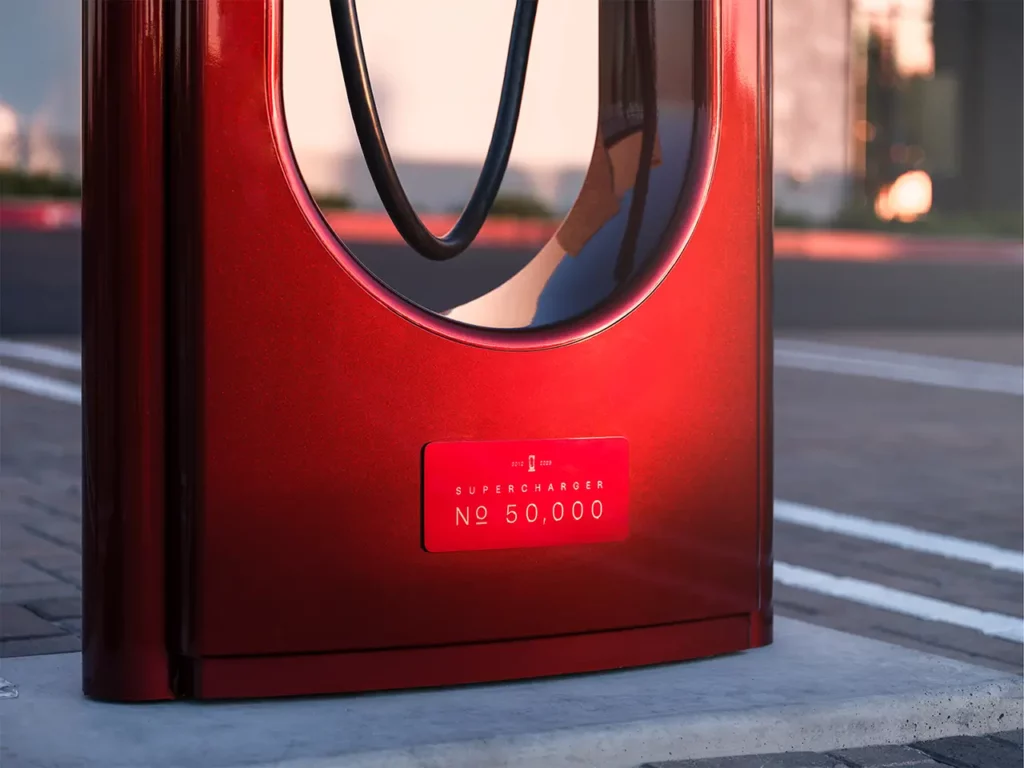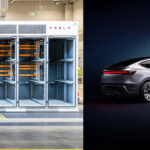Tesla (TSLA) has written a new chapter of the automotive industry in the last 11 years with its Supercharger charging network alone.
“On September 24, 2012 — we opened our 1st Supercharger. This week, we opened our 50,000th and we’re just getting started,” said an email I received from Tesla about two weeks ago.
Producing the best and most technologically advanced electric cars is not only the complete solution for EV consumers but also the widespread availability to conveniently and quickly charge their vehicles. And Tesla has aced in all of these domains.
Tesla installed the 50,000th Supercharger stall at the Roseville, CA Supercharger station. The location of this station is 1851 Freedom Way, Roseville, California.

Interestingly, Tesla painted the 50,000th Supercharger in Ultra Red color that the automaker introduced for its premium-segment Model S and Model X EVs. In addition to the fiery Ultra Red, Tesla also pasted a label on this specific Supercharger that says “2012 – 2023. Supercharger 50,000”.
Tesla has also explicitly marked the 50,000th Supercharger with a “250 kW” information card above which means it’s a regular V3 Supercharger. Tesla successfully mitigated any V4 speculation or confusion among the users of the 50K Supercharger in advance.
The entire Tesla Community is also cherishing the success of Tesla in building a widespread and robust charging network. These developments eliminate “range anxiety” for Tesla owners, a term coined in the early days of the EV revolution that is losing its luster with the expansion of charging infrastructure globally – and Tesla is leading from the front.

In the video above, as a Tesla Model 3 owner charges his vehicle on Tesla’s 50,000th Supercharger, a Hyundai Ioniq 6 was spotted driving away from the Supercharger station. Although it’s a beautiful EV with fast charging capability built-in, it’s not able to plug in at a Tesla Supercharger.
Apparently, it’s going to stay this way for Hyundai owners in the foreseeable future as the Korean automaker refuses to adopt Tesla’s North American Charging Standard (NACS). Earlier in June, Hyundai considered NACS but later on, did not affirm to switch to the NACS charge port in its EVs.
Tesla opened its NACS plug and charge port design last year for other automakers to unify an EV charging standard across North America. American automakers Ford, GM, and Rivian agreed to adopt this standard earlier this year, later on joined by Germany’s Daimler (Mercedes-Benz) as well.
The Society of Automotive Engineers (SAE) standardization body has also approved Tesla’s NACS as the standard charge port and plug for North America. Ultimately, it’s a win-win situation for both Tesla and its competing EV manufacturers but Tesla is on the crest of a wave with the Supercharger Network.
“With Superchargers placed on convenient routes across the world, you can go anywhere with Tesla. Just enter a destination and Trip Planner will automatically route you to charging options along the way,” this was the 2nd statement of the Tesla email I mentioned above.
It took Tesla 11 years to build 50K Superchargers, but I am sure it will take much less time to reach 100K. Let the world know your thoughts in the comments section below.
With the current proliferation of the Tesla Supercharger network, the North American map looks like the following diagram if all the Superchargers were to be marked with a red lightning bolt icon:

Related
- Tesla’s automotive revenues slide a little in 2024 but energy business grows immensely — Q4 report
- Tesla (TSLA) demonstrates Unsupervised FSD as vehicles drive themselves from production area to the loading dock
- Tesla Model Y Juniper has a front bumper camera for FSD and more — confirmed
- Tesla (TSLA) launches Model Y Juniper for North America, here’s the complete list of improvements and price
- Tesla Cybercab spotted testing at Giga Texas, it’s the next-gen Model 2 compact car, says Sandy Munro
- UK police seized a Cybertruck saying it’s not road-legal in the country









